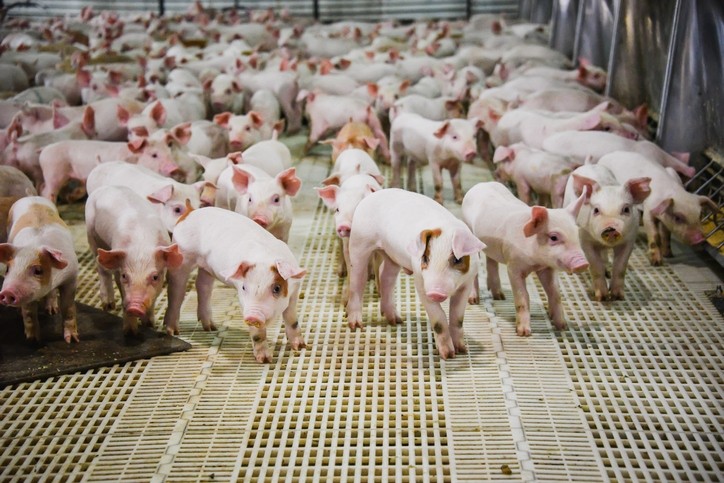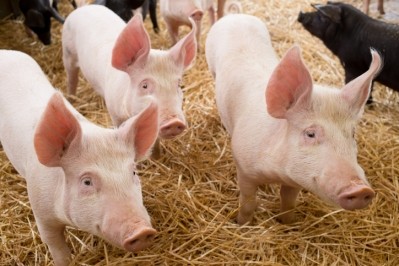Enhancing the feeding value of corn distiller’s grains for pig and poultry diets

Corn distiller’s dried grains with solubles (cDDGS) from the corn-ethanol dry-grinding process has become a major feed ingredient used extensively in US ruminant diets but less so in monogastric animal diets.
The ingredient tends to have imbalanced key amino acids (AA), high indigestible fiber and phytate, and risk of mycotoxin contamination, aspects that thus limit its inclusion rate in the diets of poultry and pigs.
A team from the Department of Animal Science, University of Minnesota, St Paul, which included leading experts, Dr Gerald Shurson and Dr Pedro Urriola, set about finding a way to improve the feeding value of cDDGS.
Earlier investigations
Several avenues have already been explored in this respect, they noted in a paper published in Animal Feed Science and Technology.
“Examples include direct addition of exogeneous enzymes (carbohydrases and proteases) to cDDGS when feeding to swine, enzymatic modification of cDDGS followed by fermentation using bacteria and yeast, and direct solid-state fermentation of cDDGS using fungal strains and probiotics (Wang et al., 2018).
“It was shown that fermenting cDDGS with the bacteria, yeast and fungal strains could improve protein digestibility, reducing phytic acid, producing high activities of cellulase and xylanase, reducing indigestible fiber, increasing protein content and organic acids.
“Co-fermentation of corn-ethanol co-products with different agro-industrial residues such as soybean hull, canola meal, cotton seed meal, sugarbeet pulp has been investigated, together with protein improvement by supply of nitrogen (N) source, reduction of mycotoxins, and sequential fermentation for digestibility improvement.”
Using single bioprocess with co-cultured fungal strains to improve feeding value of cDDGS as a safe monogastric animal feed ingredient, however, has rarely been reported, said the University of Minnesota team.
“In this study we evaluated the effects of co-culture solid-state fermentation of cDDGS with three generally-regarded-as-safe (GRAS) fungal strains, M. indicus, R. oryzae, and T. reesei, as compared with their monoculture, on the changes of mycotoxins, phytate, free phosphorus, AA profile, fiber, soluble sugars, and in vitro digestibility of dry matter (IVDMD) and AA (IVDAA).”
The study
Their study used cellulolytic fungus Trichoderma reesei (TR), two zygomycete fungi Mucor indicus (MI) and Rizopus oryzae (RO) and their co-cultures to ferment corn wet distiller’s grains with solubles (WDGS) with the supply of soybean hulls and urea via solid-state fermentation at 28°C for up to nine days.
Compared to control (non-inoculation) and monoculture, TR and RO co-culture (TR+RO) after six and nine days showed more balanced branch-chain AA (BCAA) of valine (Val), leucine (Leu), and isoleucine (Ile), higher phytate reduction (56–61%), lower concentration of deoxynivalenol (DON), zearalenone (ZEN) and total aflatoxins (AFT).
However, the treatments with MI (MI, RO+MI, TR+MI) showed increase of DON while reduction of ZEN compared to treatment without MI.
Due to the fast growth of RO and MI, the co-culture of TR+MI and TR+RO, following three days of fermentation, improved total AA by 32% and 28%, respectively, higher than monoculture of TR (18 % after 3 days).
Compared with co-culture, monoculture of TR produced feed with higher in vitro dry matter digestibility (IVDMD) with 22–43 % improvement from control, and higher in vitro digestibility of total AA (IVDAA) with 35–50 % improvement from control; a similar level was also achieved by co-culture of TR+RO after six days of fermentation.
The researchers concluded that co-culture of TR+RO and monoculture of TR in fungal bioprocessing could provide a feasible solution to improve the overall feeding value of the cDDGS.
In summary, they said Trichoderma reesei and Rhizopus oryzae co-culture fermented wet distiller grains with soluble and soybean hull mixture (75/25) had overall lower mycotoxins level without generating deoxynivalenol, zearalenone and aflatoxins, better balanced amino acids profile, enhanced phytate degradation, and was higher in vitro dry matter digestibility (IVDMD) and higher in vitro digestibility of total AA (IVDAA).
Source: Animal Feed Science and Technology
Title: Enhancing feeding value of corn distiller’s grains with solubles via fungal co-cultured solid-state fermentation for monogastric animal nutrition
Authors: X Sun, P E Urriola, G Shurson, D Tiffany, B Hu








